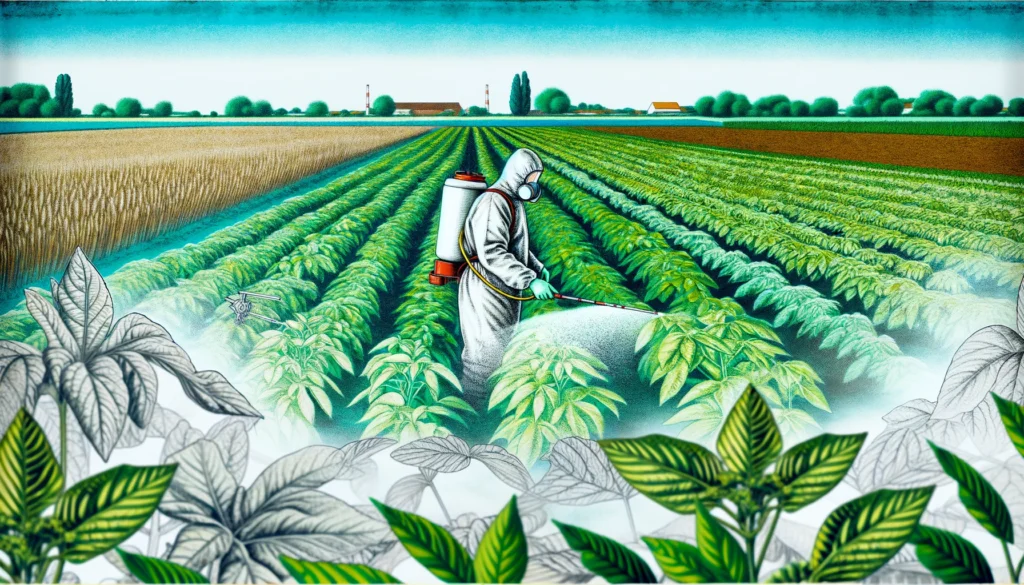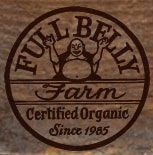
Fungicide A detailed illustration depicting the use of agrochemicals in a farming setting. The image shows a farmer in protective gear spraying agrochemicals o.webp.webp
Fungicide
Definition:
Fungicide refers to a chemical compound or biological agent utilized to control or prevent the growth and spread of fungal diseases in plants, crops, and agricultural environments.
Informational/Educational Words:
Fungal diseases, pathogens, crop protection, modes of action, resistance management, application techniques, environmental impact.
Fall off the barn roof and busted your keister? Life on the farm or ranch can be tough on the bum. Need a break? Laugh it off at FarmerCowboy.com, the #1 farm humor site. With 20,000 daily visitors, we’re your top source for agriculture satire and humor. Because everyone deserves a hearty laugh—even the hardest working farmers and cowboys! Join us and turn those long days into fun tales at FarmerCowboy.com.
Academic and Helpful Content:
Fungal diseases pose significant threats to agricultural productivity by causing widespread damage to crops and plants. Fungicides play a crucial role in disease management strategies, helping farmers mitigate the impact of fungal pathogens and maintain healthy crop yields. However, the effective use of fungicides requires careful consideration of factors such as disease identification, application methods, resistance management, and environmental sustainability.
Importance of Fungicides in Agriculture:
Fungicides serve as essential tools in disease control programs, offering protection against a wide range of fungal pathogens that can infect crops at various growth stages. By targeting fungal spores, mycelium, and other reproductive structures, fungicides help prevent the development and spread of diseases such as powdery mildew, leaf rust, and fusarium wilt, which can lead to yield losses and quality deterioration.
Types of Fungicides:
Fungicides are classified based on their chemical composition and mode of action. Chemical fungicides include systemic and contact fungicides, which differ in their ability to penetrate plant tissues and provide long-lasting protection. Biological fungicides, derived from naturally occurring microorganisms or plant extracts, offer alternative solutions with reduced environmental impact and minimal risk of resistance development.
Application Techniques:
Farmers utilize various application techniques to apply fungicides effectively and ensure uniform coverage on plant surfaces. These techniques include foliar sprays, seed treatments, soil drenches, and trunk injections, depending on the target crop, disease severity, and environmental conditions. Proper timing and dosage are critical factors in maximizing fungicide efficacy and minimizing off-target effects.
Resistance Management:
The widespread use of fungicides can lead to the development of resistance in fungal populations, reducing the effectiveness of chemical control measures over time. To mitigate resistance, farmers must adopt integrated disease management strategies that incorporate fungicide rotation, tank mixing, and use of resistant crop varieties. Monitoring for signs of resistance and implementing proactive measures are essential for preserving the efficacy of available fungicides.
Environmental Impact:
While fungicides play a vital role in disease management, their use can have unintended consequences on the environment and non-target organisms. Chemical fungicides may persist in soil and water, potentially contaminating ecosystems and harming beneficial microorganisms, insects, and aquatic organisms. Minimizing fungicide runoff and drift through proper application practices and buffer zones is crucial for reducing environmental risks.
Regulatory Oversight:
Government regulations govern the registration, sale, and use of fungicides to ensure their safe and responsible application in agriculture. Pesticide registration processes evaluate the efficacy, safety, and environmental impact of fungicide products before they can be marketed and used by farmers. Regulatory agencies also establish maximum residue limits (MRLs) for fungicide residues in food crops to protect consumer health.
Future Directions:
Advancements in fungicide research and development focus on improving the efficacy, safety, and environmental sustainability of disease management strategies. Innovations in fungicide formulations, delivery systems, and application technologies aim to optimize disease control while minimizing pesticide inputs and environmental impact. Integrated approaches that combine fungicides with cultural practices, biological controls, and resistant crop varieties offer promising solutions for sustainable disease management in agriculture.
In summary, fungicides play a critical role in protecting crops and plants from fungal diseases, contributing to global food security and agricultural sustainability. However, their use must be guided by principles of responsible pesticide stewardship, including resistance management, environmental protection, and regulatory compliance. By integrating fungicides into holistic disease management strategies, farmers can effectively control fungal pathogens while minimizing risks to human health and the environment.
Originally posted 2009-09-21 09:57:36.
Originally posted 2024-06-14 15:40:24.
Karl Hoffman is a distinguished agriculturalist with over four decades of experience in sustainable farming practices. He holds a Ph.D. in Agronomy from Cornell University and has made significant contributions as a professor at Iowa State University. Hoffman’s groundbreaking research on integrated pest management and soil health has revolutionized modern agriculture. As a respected farm journalist, his column “Field Notes with Karl Hoffman” and his blog “The Modern Farmer” provide insightful, practical advice to a global audience. Hoffman’s work with the USDA and the United Nations FAO has enhanced food security worldwide. His awards include the USDA’s Distinguished Service Award and the World Food Prize, reflecting his profound impact on agriculture and sustainability.



